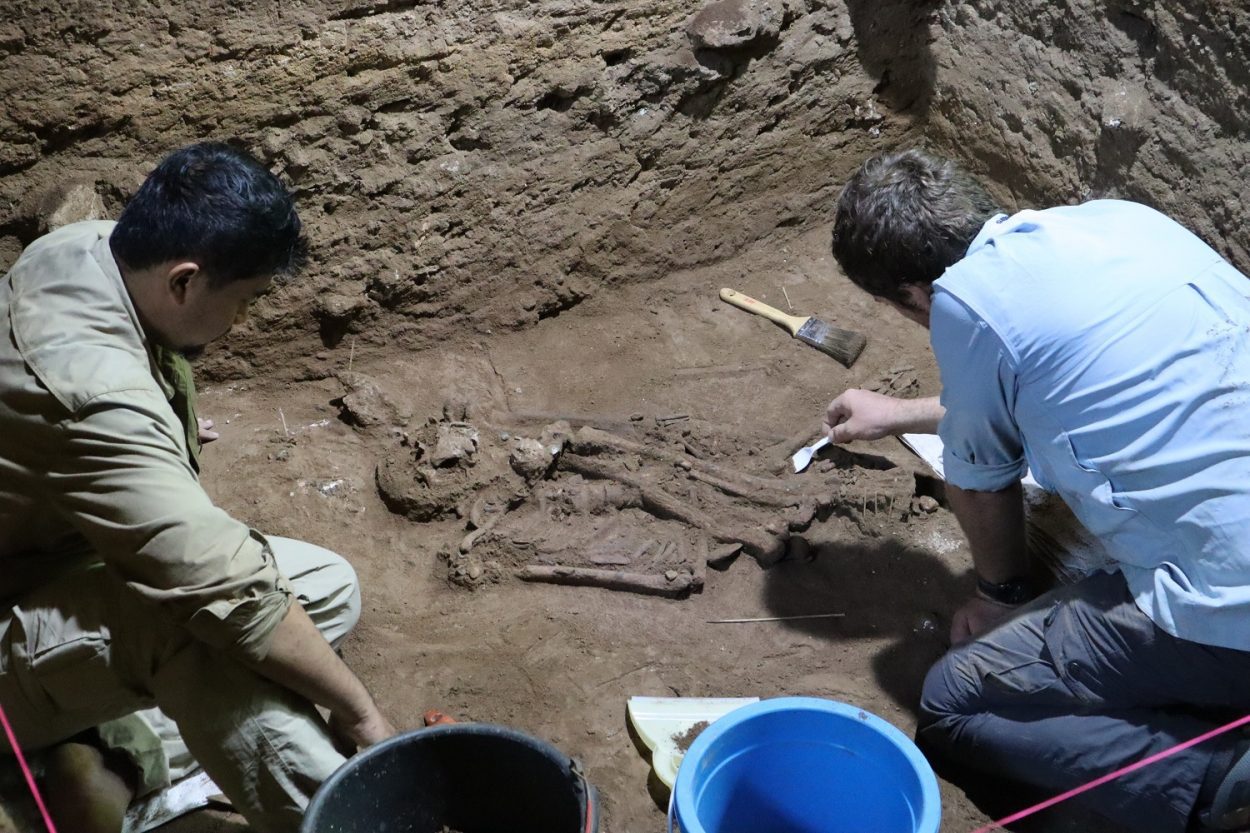Griffith University and a multi-national team of archaeologists have found the skeletal remains of a hunter-gatherer, whose lower left leg was amputated by a skilled prehistoric surgeon 31,000 years ago.
The discovery, published in Nature, is thought to be the earliest known evidence for a complex medical act, pre-dating other instances of stone age ‘operations’ found at sites across Eurasia by tens of thousands of years.
The remains were found in Liang Tebo, a limestone cave in the remote Sangkulirang-Mangkalihat region of eastern Kalimantan, the Indonesian portion of Borneo.
An analysis by palaeopathologist, Dr Melandri Vlok (University of Sydney), confirmed tell-tale bony growths related to healing, suggesting the limb was surgically amputated several years earlier when the individual was a child.
“In fact, it was a huge surprise that this ancient forager survived a very serious and life-threatening childhood operation, that the wound healed to form a stump, and that they then lived for years in mountainous terrain with altered mobility – suggesting a high degree of community care,” Dr Vlok said.
Up until now, the oldest evidence yet revealed for amputation surgery had comprised the 7,000-year-old skeleton of an elderly male Stone Age farmer from France, whose left forearm had been carefully amputated just above the elbow.
Scholars had assumed that humans lacked the expertise and technology to perform difficult procedures like surgical amputation, until tens of thousands of years later after the emergence of farming communities and villages transformed human society within the last 10,000 years.
Dr Maloney from Griffith University said: “It was thought the shift from foraging to farming at the end of the ice age gave rise to previously unknown health problems that stimulated the first incremental advances in medical technology, including the earliest attempts at stone age surgery”.
The medical skill and proficiency demonstrated by this amputation contrasts with the litany of horrors that awaited patients of medieval surgeons in Europe, while modern medicine only reached regular amputation success following the discovery of antiseptics at the turn of the previous century.
Header Image Credit: Tim Maloney







